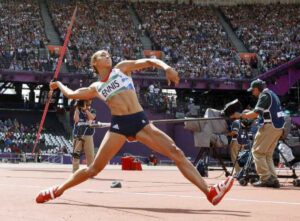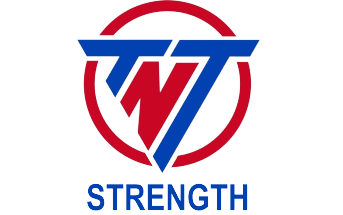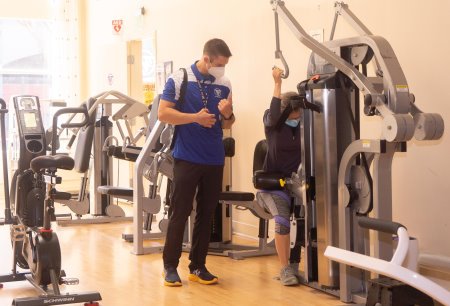
It has been established that power involves three components: (1) muscle force, (2) the distance of force application, and (3) the time of force application. Therefore, power can be enhanced by: (1) increasing the muscle force, (2) increasing the distance of force application, or (3) decreasing the time of force application. These are basic, irrefutable laws of physics.

But what about developing power for athletics in the weight room? Is there a “best” way to go about it? Let’s take a closer look.
Any type of progressive strength-training, regardless of movement speed, will elicit gains in muscle hypertrophy with concurrent enhancements in strength and power. However there are a few things to take into consideration when creating a workout plan aimed not only at achieving maximum power output but on doing so safely and efficiently.

No matter the speed of movement used, muscle fibers are recruited in a fixed order: slow twitch / type 1 –> intermediate / type 2 –> fast twitch / type 2A –> fast twitch / type 2B & 2C. Generally speaking, if the demand is low, the slow/type 1 fibers are called upon. As the demand for EFFORT increases, the higher threshold, fast / type 2 fibers are called upon.
Creating high tension in the muscle fibers and working to momentary muscular failure involves the greatest amount of relative muscle tissue. Effort (working to fatigue) and using good form (controlled movement with no bouncing or jerking) are important here. If in doubt, slow it down and aim for maximum repetitions (safely).
A variety of exercise prescriptions can be used provided muscle overload occurs, such as heavy resistances / few repetitions, lighter resistances / more repetitions, minimal exercise bouts (i.e., 1 to 3 sets per muscle group) and / or varied rest time between sets and exercises (i.e., 30 seconds to 3:00+).

There is no skill transfer from a weight room exercise to a totally different athletic skill done in competition. The principle of specificity clearly states that for a positive transfer to occur, exactness in a number of factors must be present. The fact is, no weight room exercise exactly replicates any sport skill (other than the sports of weightlifting and power lifting). That is why one should practice his / her sport skills separately, then generally improve total-body weight room strength.
At TNT Strength, we recommend that coaches and athletes implement smoother, more controlled lifting speeds (approximately 1-2 seconds for raising the weight, and 3-4 seconds for lowering the weight is a great place to start) for the following reasons:
1) Controlled movement speed reduces momentum, allowing the target musculature to perform the work.
2) Controlled movement speed minimizes abrupt acceleration and deceleration forces, thus reducing the probability of muscle and connective tissue trauma.
3) Controlled movement speed creates and maintains more muscle tension.
4) Controlled movement speed produces more force output.
Although anyone can alter their strength, muscle size and body composition via strength training, their genetic endowment effects the magnitude of potential gains in the weight room. Those blessed with a high percentage of the slow / type 1 muscle fibers may not develop large muscles or great strength. Likewise, those who more easily get bigger and super-strong most likely possess a greater volume of the larger, more powerful type 2 fibers. Also, longer arms / legs and unfavorable muscle origins and insertions hinder great strength demonstration. Ultra-strong humans – male or female – usually have exceptional body leverages to allow for this.
TAKU’s NOTE: For anyone preferring to implement strength-training exercises that are more ballistic in nature (e.g., Olympic- style lifting and its variations), we recommend that you seek the tutelage and advice from qualified individuals and/or organizations who have expertise in that area.
References:
1) Behm, D.G., Sale, D., Intended Rather than Actual Movement Velocity Determines Velocity-Specific Training Response, Journal of Applied Physiology, 74(1): 359-368, 1993.
2) Carpinelli, R., Speed of Movement for Building Optimal Strength, HIT Newsletter, 1996.
3) Kelso, T., The Basics of Muscle Contraction: Implications for Strength Training, In Maximize Your Training ( Brzycki, M., ed.), Ch. 3, 35-80, Masters Press, Lincolnwood, IL, 1999.
4) Tohji, H., et al., Effects of Combined Training Programs on Force-Velocity Relation and Power Output in Human Muscle, Thirteenth International Congress on Biomechanics, (Marshall et al., eds.), University of Western Australia, Perth, 311-312,1991.
5) Wakeham, T., Improving Speed, Power, and Explosiveness, In Maximize Your Training, (Brzycki,M., ed.) Ch. 20, 257- 270, Masters Press, Lincolnwood, IL, 1999.
_______________________________________________________________________
If you are Looking for the best Strength Training tool for in Home Training I Highly recommend that you check out the Harambe System. As far as I am concerned it is the best home gym on the market. If you visit their website you can get 10% off using the code TNT at checkout.
For more ideas about creating simple effective strength training and conditioning programs check back here frequently or visit us at: www.tnt-dev.10web.me
Register your name and email address on the site to Get Our Free Nutrition & Training PDF! And so you can be kept up-to-date on the latest news from TNT Strength.
TEXT “TNT” TO 855.796.9905 for more info
TNT has over 40 years of combined fitness experience, so if you’re looking for a coach who can train you in person in our Oakland California Studio or online from anywhere in the world, visit our online training page to book a consultation.

















